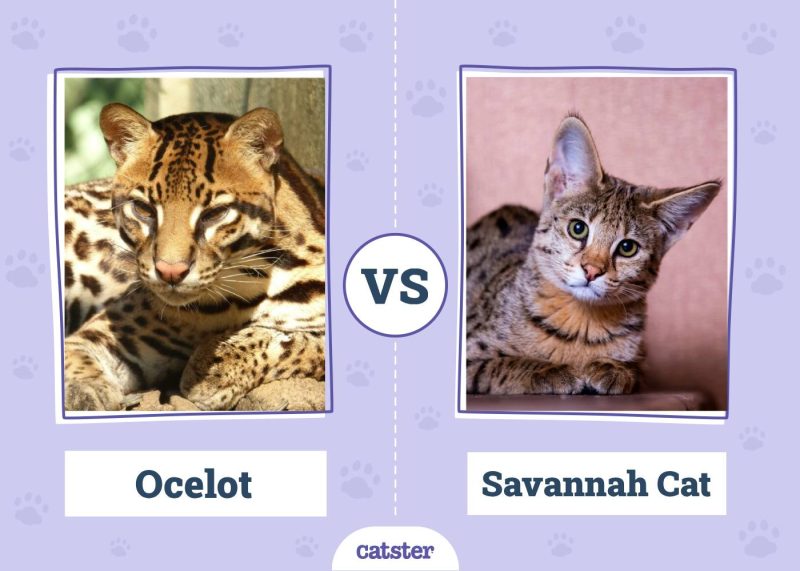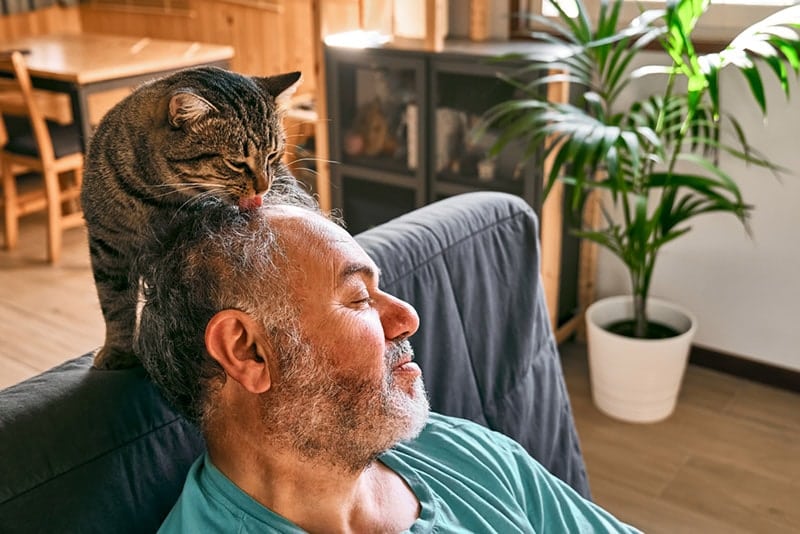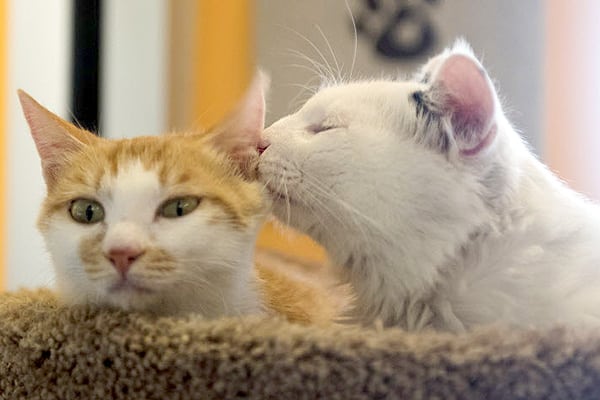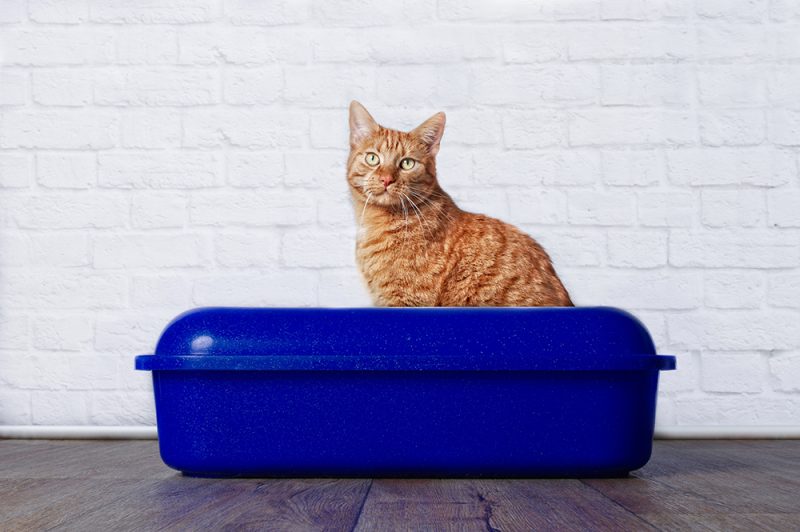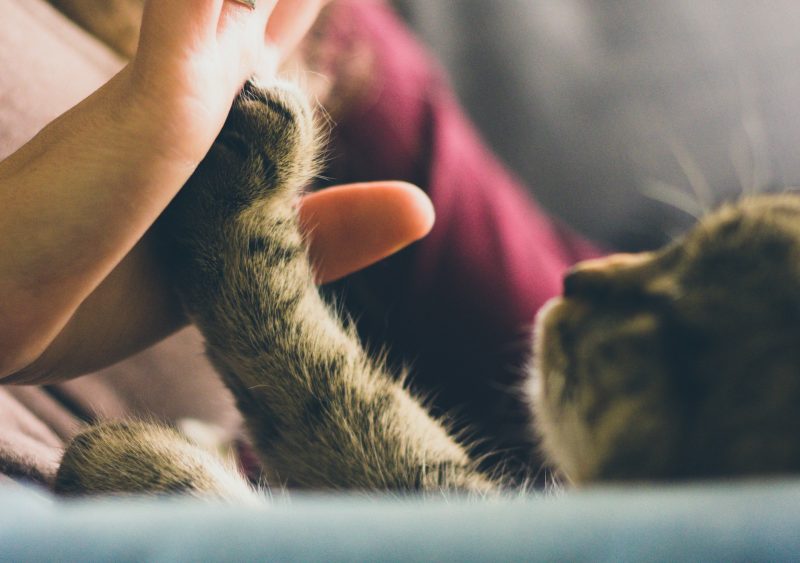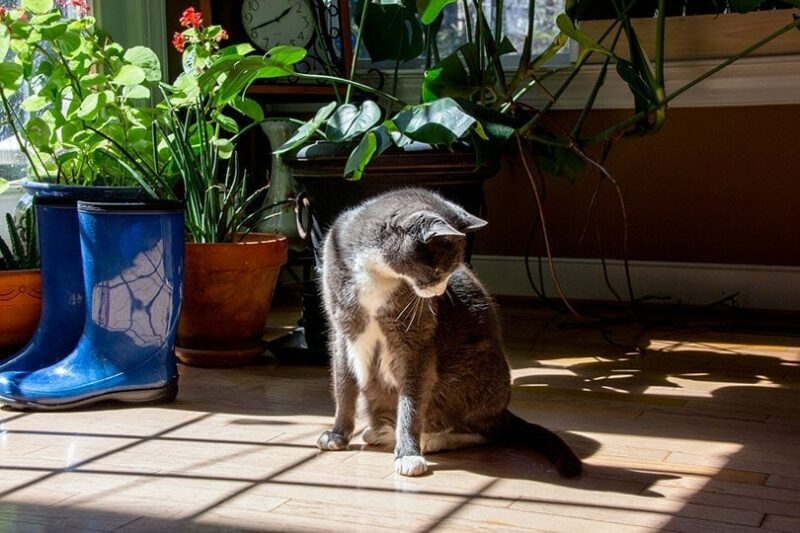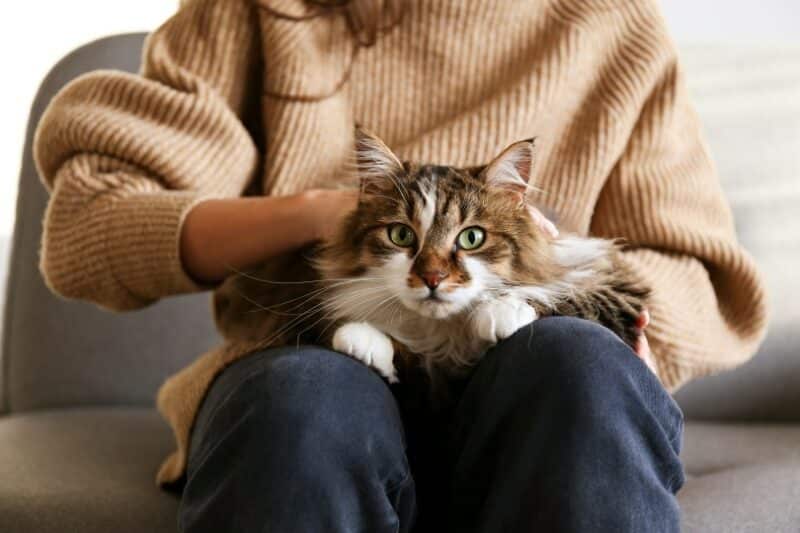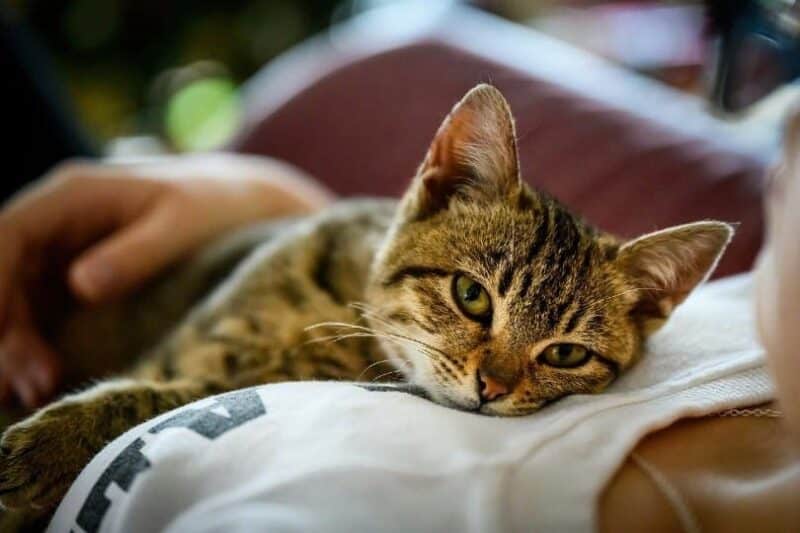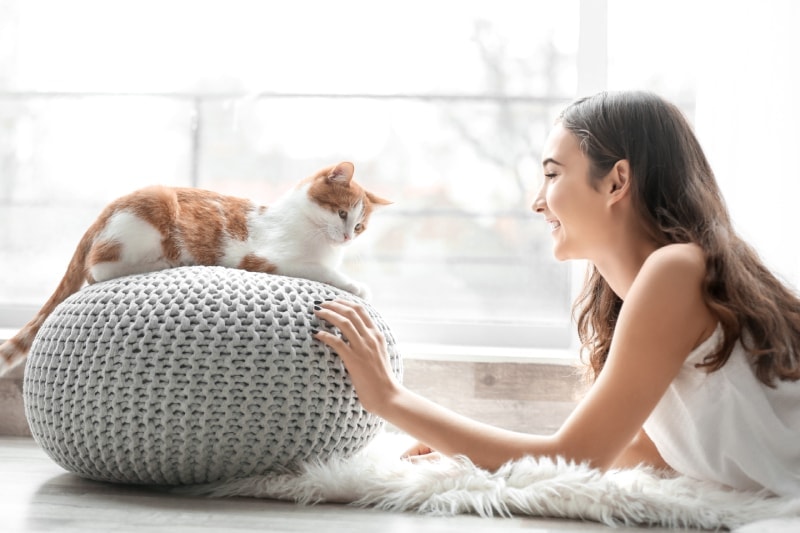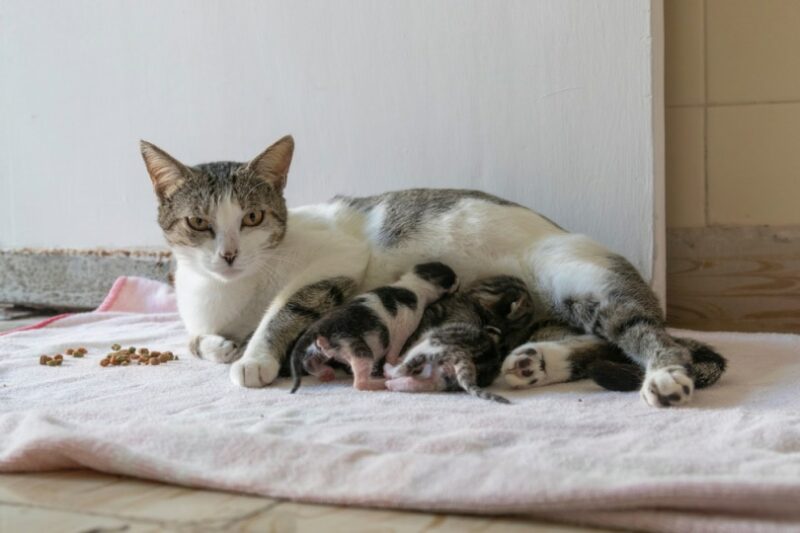In this article
View 3 More +The Ocelot and Savannah Cat share several similarities; both cats have a black spotted coat and a tan color. Both are very energetic and love the water, and they require plenty of mental and physical stimulation to keep them happy. Despite their similarities, they are two very different types of cats. The most striking difference is that they are different species, one is a domesticated house cat (Savannah), and the other is a jungle-dwelling wild cat (Ocelot).
The Savannah trace their heritage back to Africa on one side, while Ocelots come from South and Central America. Yet both are sometimes kept as pets, and if you’re considering adopting one of the cats as your own, keep reading, and we’ll show you the difference between the Ocelot and the Savannah.

Visual Differences

At a Glance
- Average height (adult): 16–20 inches
- Average weight (adult): 19–35 pounds
- Lifespan: 7–20 years
- Exercise: 1+ hours a day
- Grooming needs: Moderate
- Family-friendly: No
- Other pet-friendly: No
- Trainability: Difficult
- Average height (adult): 11 inches
- Average weight (adult): 10 pounds
- Lifespan: 12–20 years
- Exercise: 30 minutes a day
- Grooming needs: Low
- Family-friendly: Yes
- Other pet-friendly: Often
- Trainability: Intelligent but stubborn

Ocelot Overview
The Ocelot is a medium-sized wildcat that lives in Central America and northern South America. They are easily identifiable by their black-spotted tan coat, thick tails, large eyes and paws.
Even though they are wild animals, some exotic cat enthusiasts keep Ocelots as pets. The most important thing to know is that Ocelots are not domesticated. It is not recommended to keep them as pets.
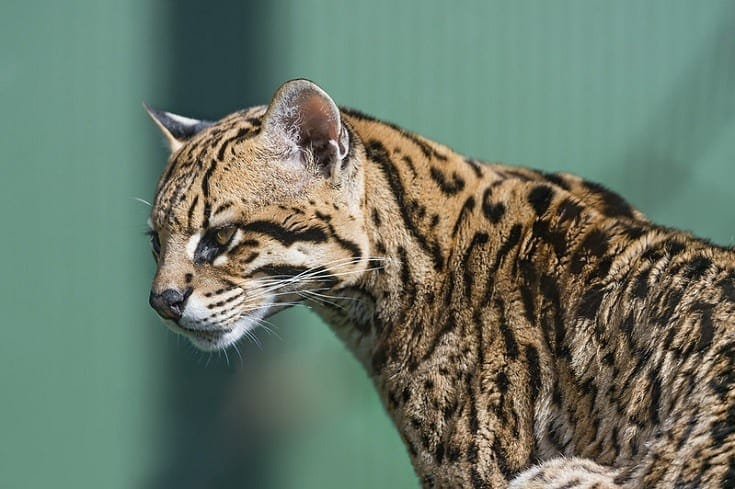
Endangered
There are different populations and subspecies of Ocelot. Leopardus pardalis albescens, which used to be found in Texas, is listed as “federally endangered.” There are thought to be less than 100 individuals left in the entire United States. Other subspecies found in South America are faring better after a period on the endangered list. Regulations regarding the animal’s transport, hunting, selling, and keeping were introduced in the mid-70s. Thanks to these regulations, the ocelot population began to rise. Eventually, the Ocelot made it onto the list of animals with least concern; however, the Ocelot population has begun to fall again. Ocelots are often trafficked for the pet market by killing the mother and taking the babies to be pets.
Training
Ocelots are challenging and not really suited to training except by specialists. They have powerful instincts, some of which are not conducive to a family environment. For instance, Ocelots hunt constantly and do so whether they’re well-fed or not. Because of their desire to hunt, your neighbors’ pets and local poultry are at risk. Toys and playing can only do so much to keep your Ocelot entertained and away from hunting. No matter the training, the instinct will never entirely go away.

Suitable for:
Ocelots, despite their adorableness, don’t make great pets and should not be considered as such. They are beautiful wild animals, and a suburban home, apartment, or mansion is not a suitable environment. Owning one as a pet is also likely to be illegal or at least highly regulated, depending on where you live. Alaska and New England have banned them, and some states require you to pay special fees. Ocelots are suitable for living in their natural, wild habitat.

Savannah Cat Overview
The Savannah was developed by crossing the African Serval wild cat (Leptailurus serval) with a domestic Siamese cat (Felis catus). This makes the Savannah a hybrid cat breed: the offspring of two different species. The Savannah is categorized into generations: F1, F2, F3, F4, and so on to F8 and beyond. An F1 Savannah Cat has the most Serval DNA, and the F8 has the least serval DNA.
All generations of Savannah share similarities. Their black spots decorate their yellow, tan, or brown coats, and they have large ears. A physical characteristic that differs between the categories is the size. They can weigh anywhere from 10 to 25 pounds and have a height of 11 to 18 inches, depending on their generation.
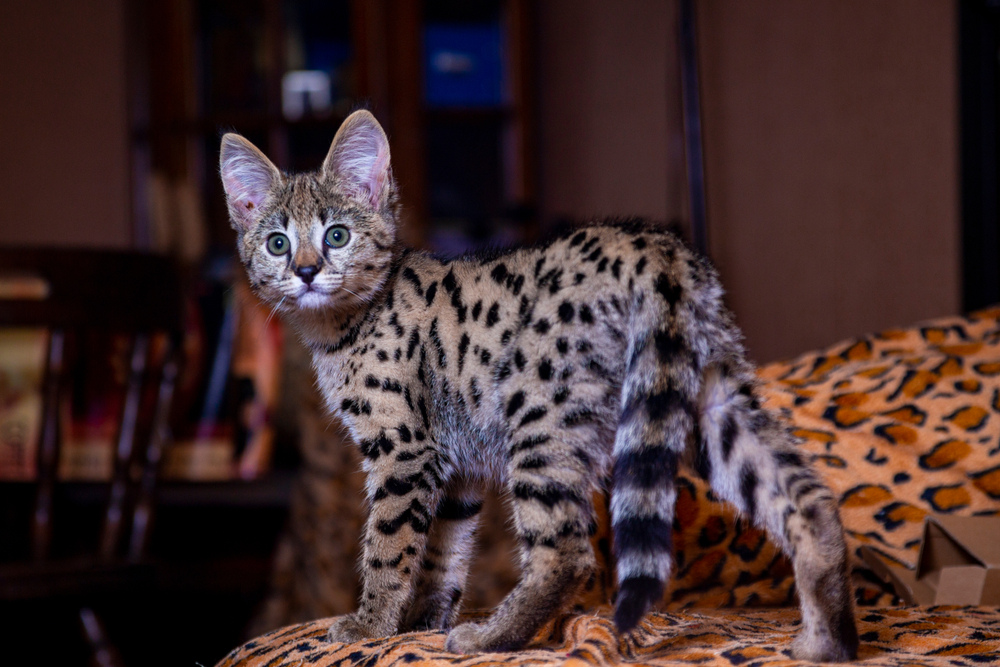
Personality
The earlier generations, F1 and F2, are not generally suitable as house pets. Later-generation Savannahs are said to be very friendly and playful. They are also very intelligent, which leads to them being curious and active. Savannahs are energetic felines; they love to play and hardly ever tire. Because of their hyper nature, they need a lot of input from their caregivers to keep them busy and entertained.
Training
Savannah Cats have been described as more dog-like than cat-like. This, combined with their high intelligence, allows them to respond to basic commands easily. However, no matter how dog-like, they are still cats, and training requires patience.
It’s important to start slow and use positive reinforcement and to ensure they stay engaged, limit the sessions to 5 to 10 minutes. Unlike some breeds, you can leash-train your Savannah to walk with a harness, and since they usually like water they may join you for a bath, too.
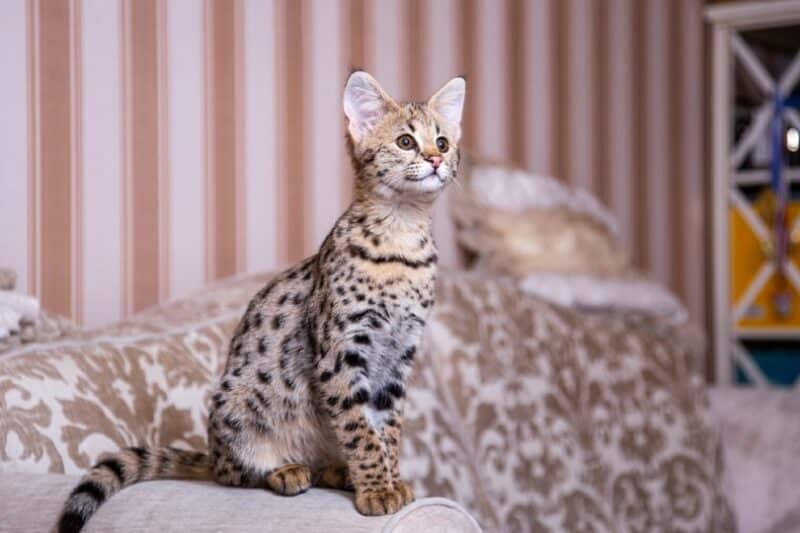
Suitable for:
Savannah cats love attention and are ideally suited to active families with older children. They are loving pets if they get plenty of attention, so if you can’t provide that, a Savannah probably isn’t for you. Savannahs are reported to love having other cats or dogs around.

Which Cat Is Right for You?
Hopefully, this article has helped you learn more about these two beautiful cats. The Savannah was bred to be a pet but only the later generations are suitable as pets. If you want to own an Ocelot, there’s much to consider, and it is not recommended that they be kept as pets. They are wild carnivores with wild behavior and needs, too.
Featured Image Credit: Left – LucasFZ70, Pixabay | Right – Kolomenskaya Kseniya, Shutterstock
